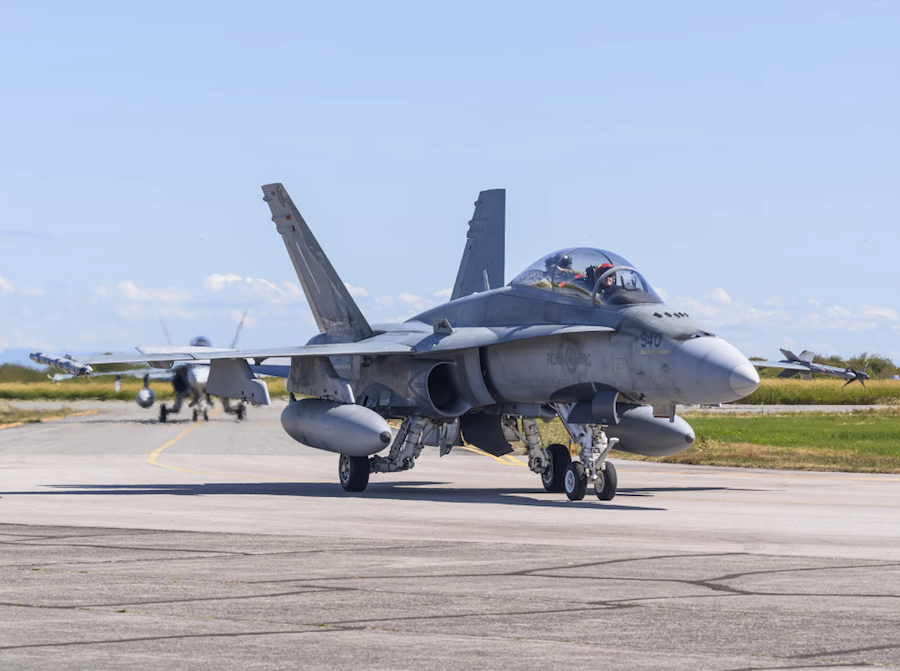The convergence of December’s global climate talks in Expo City, Dubai and the Israel-Hamas conflict is raising questions and concerns about the possibility of climate progress during a war. While it seems paltry to examine military emissions when thousands of Palestinian lives and homes have been lost in the current conflict—most of them women and children—the environmental impact of militaries remains a blindspot in international discourse.
“It’s so hard to find data of any kind, let alone good, reliable data. It’s a huge challenge,” said Andrew Jorgenson, professor of sociology at the University of British Columbia and the founding director of the UBC’s Climate & Society Lab. Jorgenson’s research looks at how global militaries exacerbate the climate crises by contributing significant amounts of their nation state’s carbon emissions.
You may unsubscribe from any of our newsletters at any time.
In a 2023 study, Jorgenson and his co-authors found that militarization amplifies the effect of economic growth on countries’ carbon emissions. For nations with larger and better funded militaries, their impact of economic growth on increasing carbon emissions is amplified. Jorgenson has also studied the U.S. military’s direct energy consumption, which is over 99 percent fossil-fuel based. According to his current research under peer review, if the U.S. reduced their military funding by roughly six percent, the overall decrease in US military energy consumption would be on par with the energy consumed annually by the entire nation state of Slovenia.
Though Canada’s military presence and budget commitments are much smaller than those of the U.S., the Department of National Defence plays a major role in Canada’s greenhouse gas (GHG) emissions. According to Canada’s GHG Emission Inventory for 2022-23, National Defence emitted 506 kilotonnes of GHG, the highest emitter by far among Canadian government facilities and fleet operations.
Since the Paris Agreement in 2015, reporting military emissions to the United Nations has been voluntary. In its 2023 Emissions Gap report, the UN states that military emissions are likely ”non trivial” and continue to be underreported. The Military Emissions Gap calls for more transparent military emissions reporting to the UN. It lists Canada’s gap in emissions reporting as “very significant” and gives it a poor data accessibility score.
More on Broadview:
- Saleemul Huq on why the new ‘loss and damage’ fund for climate change victims must start now
- Why we need climate reparations
- How to deal with the end of the world
Jorgseson says that historically, countries have named safeguarding security as their reason for not reporting military emissions and have been reluctant to share anything publicly about their armed forces and military. The contradiction of countries participating in global climate talks and climate planning, like those at COP 28, while continuing to fund their own high-emitting military activities is not lost on him. “Multiple studies show that nations that have larger militaries, whether it’s in size or their expenditures… are much slower to ratify environmental treaties of any kind, including climate agreements,” said Jorgenson. “This is just an established empirical observation.”
Despite Canada’s climate commitments to reduce its GHG emissions by at least 40 percent by 2030 and net-zero by 2050, the latest report from the country’s auditor general reveals the government is unlikely to hit its climate target. The report shows Canada is the only G7 country that hasn’t achieved emissions reductions since 1990. It highlights its delay in implementing key measures like the Oil and Gas Emissions Cap and the Clean Fuel Regulations and that 95 percent of Canada’s 2030 Emissions plan measures did not include a target or expected emissions reductions. Canada also has the largest implementation gap out of all G20 countries, according to the UN Emissions Gap Report.
Yet, defence spending remains a top priority for the government. As reported by the CBC, in 2021-22, Canada spent $26.11 billion on national defence, the fourth highest amount for any of its ministries. The Ministry of Environment and Climate Change received $2.73 billion. The federal government increased its climate funding in the 2023 budget to $70 billion over the next five years; a significant increase from amounts committed in the years after the Paris Agreement. But in the end, defence is still on top.
Emily Huddart Kennedy, who researches environmental practices and behaviour at the Centre for Climate Justice, said the military generally doesn’t come to mind when people consider top GHG emitters. But, she goes on to say, the inconsistency of the Canadian government, when it comes to military emissions and its commitment to climate progress, makes sense.
“Governments are slow-moving bodies that tend to make very incremental change,” she said. “It’s very difficult at all levels, micro-level, household, government to take action on climate change in a way that disrupts the world as we know it and makes our lives more complicated and less certain.”
Governments and military bodies are aware of the need to decarbonize military activities. The federal government of Canada has plans to open the NATO Climate Change and Security Centre of Excellence in Montreal, where military and civilians will share knowledge on climate change security impacts and aim to reduce the climate impact of military activities.
This may be a sign of change from one of Canada’s largest institutions, but what remains to be seen is whether the quest for national security is compatible with the quest for climate security. “The world’s militaries consider the climate crises a threat multiplier,” said Jorgenson. “They’re pretty open about it. But there are these contradictions that highlight the geopolitical, economic realities of the underlying causes of the climate crises and why it’s so hard to make major progress on solving it.”
Correction: In a previous version of this story, Broadview incorrectly reported that a 2023 study found an increase in CO2 emissions in countries with larger militaries including Canada. The error has been corrected in this version.
***
Katie Doke Sawatzky is a freelance journalist from Regina, Saskatchewan, Treaty 4 Territory. She writes for local publications and is an editor with CMU Press.















Katie, I absolutely agree with you. The militaries are given a “pass” that is bad for the earth and devastating to genuine attempts being made to clean up emissions. I hope we don’t forget that the purpose of the military is to kill people — not “defend” anyone, as the police can do that — and the excessive emissions are a distant second to the tragedy of human deaths. However, I believe the militaries of the world should be held to the same standards as civilians as we have only one planet.